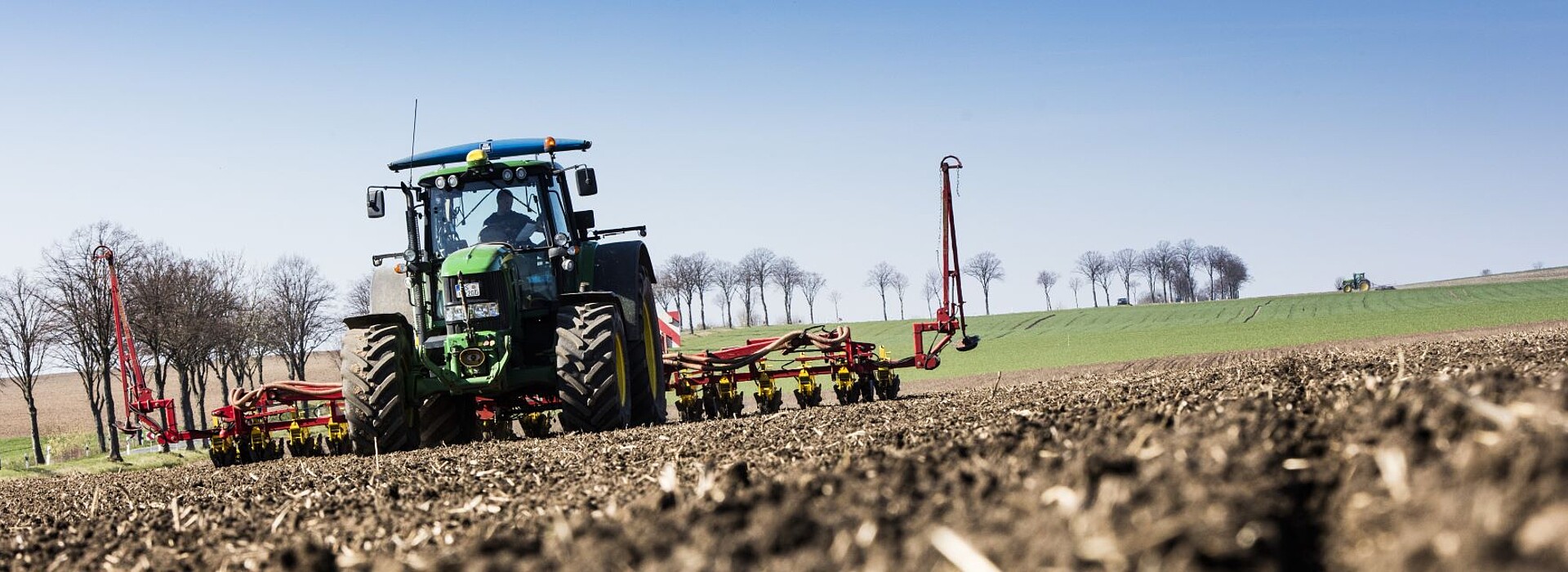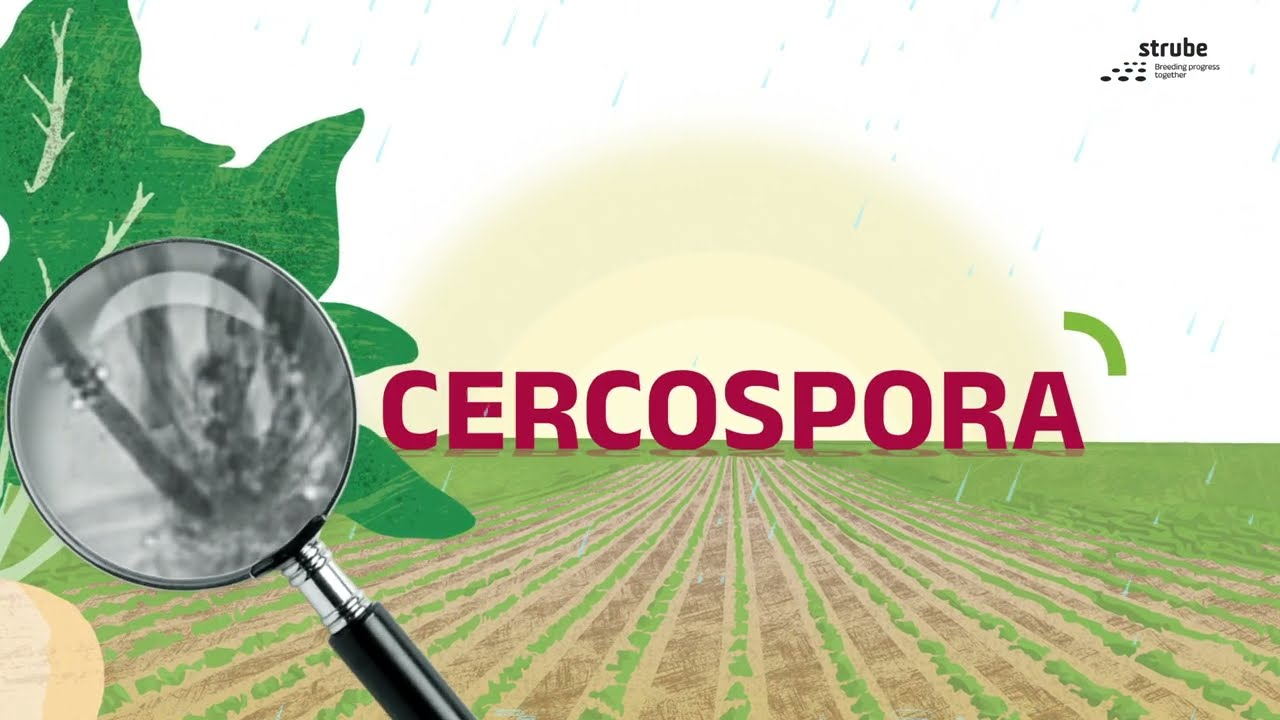Cercospora
Cercospora leaf spot disease is a fungal disease. It is caused by the pathogen Cercospora beticola Sacc.. Cercospora is the leaf disease of sugar beet with the highest impact worldwide. High moisture and warm weather are favouring the spreading of these leaf spots.
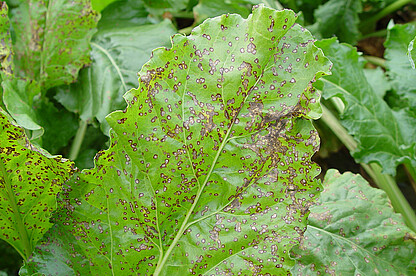
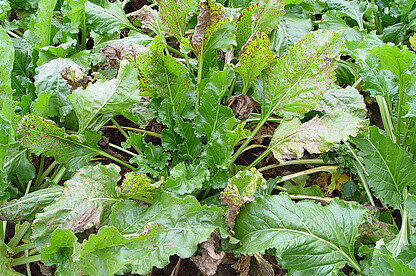


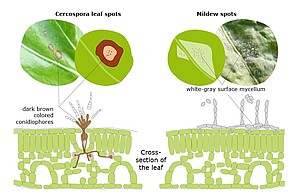
The fungi Cercospora survives in leaf debris in the soil. The sclerotia-like mycelium can survive for up to two years and forms conidia in spring, which can trigger the initial infection.
Typically, dark conidiophores with clear conidia (spores) can be seen inside the leaf spots as light gray. These are the structures the fungus uses for spreading. They are spreading by wind or water within the population. During the infection, the germ tube formed out of the fungal spores, penetrates the stomata of the leaf cells. The fungus continues to grow into the tissue. The fungal hyphae make their way between the cells. With the help of haustoria, they tap into the cells. The cell liquid supplies the fungus with nutrients. In the process, also toxins are released by the fungus, plant cells die and the leaf tissue becomes necrotic. The inner area of the Cercospora spot is enclosed by a dark red to brown ring. (Graph)
Conidia formation and infection by the fungus find the most beneficial conditions in warm and humid weather: temperatures between 25 and 30 ° C and a humidity of 100% are optimal. However, growth and spread are also possible between 6 to 35 ° C with a humidity> 91%.
Depending on climatic requirements, the disease occurs regularly in the south and south-west of Germany, preferably in the river plains (e.g. Danube, Rhine). In other regions, a stronger infection can be detected in warmer years or in specific areas whose microclimate favour the development of the fungus.

